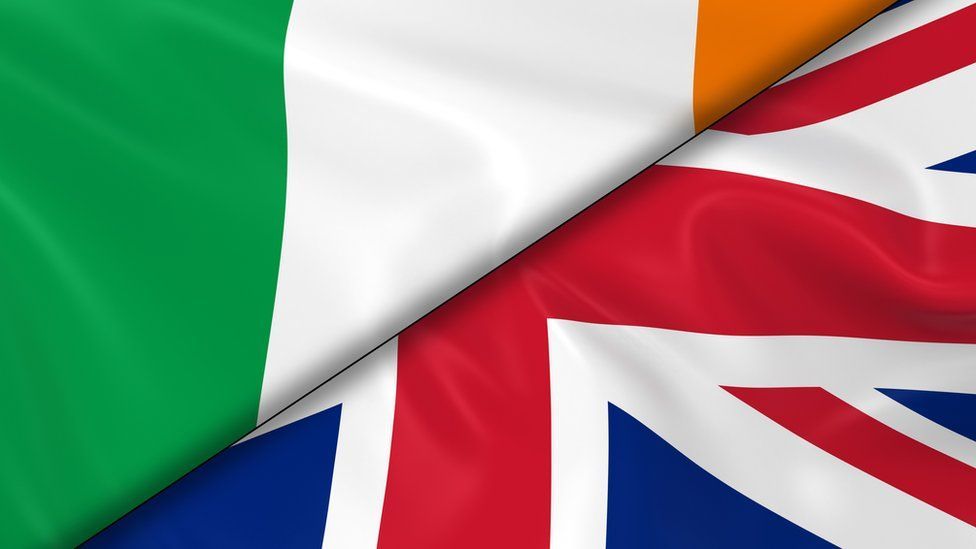
Image of the Irish flag, along with the Union Flag used in Northern Ireland. Ireland and Northern Ireland have been separated since 1921, leading to the development of sign languages unique to each country.
Source: BBC News.

Source: Drawing by XCOXIO on Pinterest. Hello and Goodbye in Irish Sign Language
The beginnings of recognition – Schools open in the Republic and the North
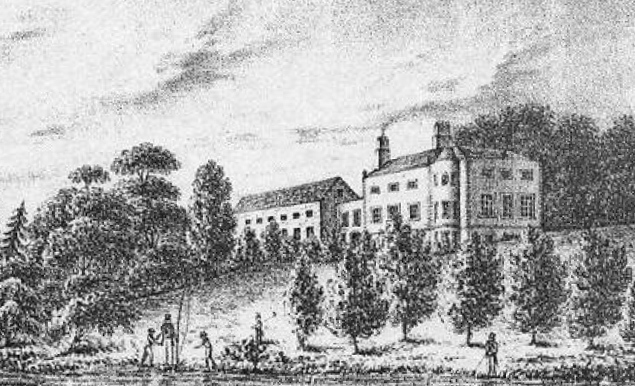
An illustration of the Claremont Institute depicted around 1820. This institute was opened by Dr. Charles Edward Herbert Orpen in 1816, the first school for deaf children ever opened in the country. Prior to opening this, Orpen’s tuition of a deaf boy he took from a workhouse brought awareness of “deaf and dumb” to the public, prompting the creation of the National Institution for Education of the Deaf and Dumb Poor in Ireland.
Source: Wikipedia. Lithograph by Allen of Dublin, produced 1st January 1820.

This is the Ulster Institution for the Deaf and Dumb, and the Blind, which was established in 1831, though this line engraving depicts the building created for the school in 1843. Classes began in a room in a small church, before moving to a building elsewhere in Belfast just a few years later. In 1843 a building was laid for the school, but they only spent a few years there before an agreement was made with the Claremont Institution that the school would withdraw from Ulster.
Source: National Museums NI. A line engraving created by William McComb.
Government Recognition in the Republic – Bills and Acts
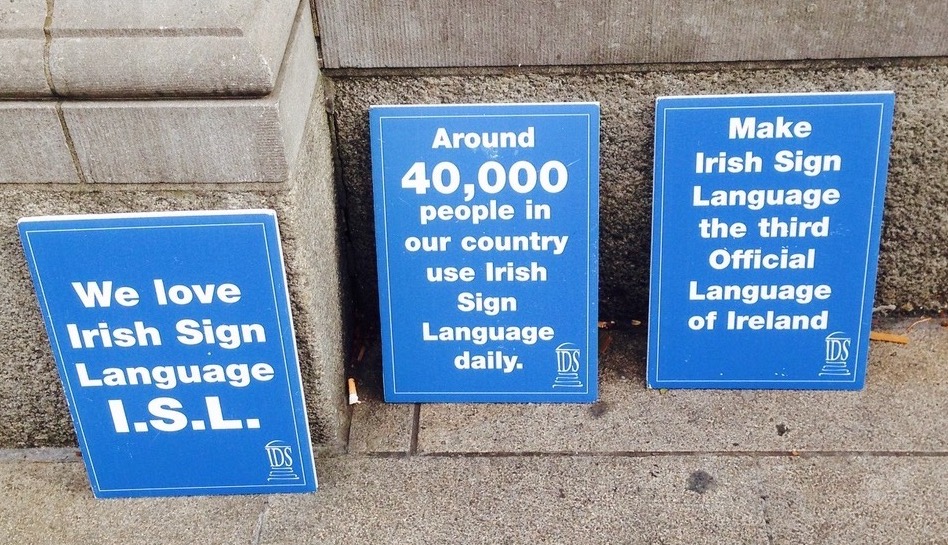
Image of signs made by Irish deaf people demanding that ISL be made the third official language of the Republic of Ireland.
Deaf people in both Northern Ireland and the Republic of Ireland had wanted ISL to become an official language for many years – for the Republic, this has become a reality, while in the North, this is a dream that has yet to come to fruition.
Source: Acadeafic
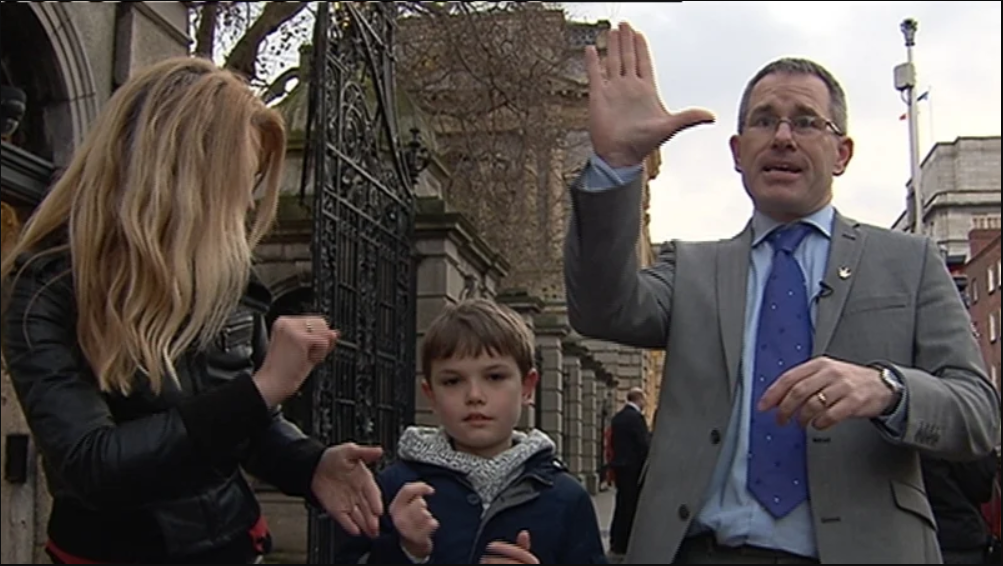
An image of campaigners standing outside of the Irish parliament as discussions were being held inside concerning the Irish Sign Language Bill 2016
Source: RTE News
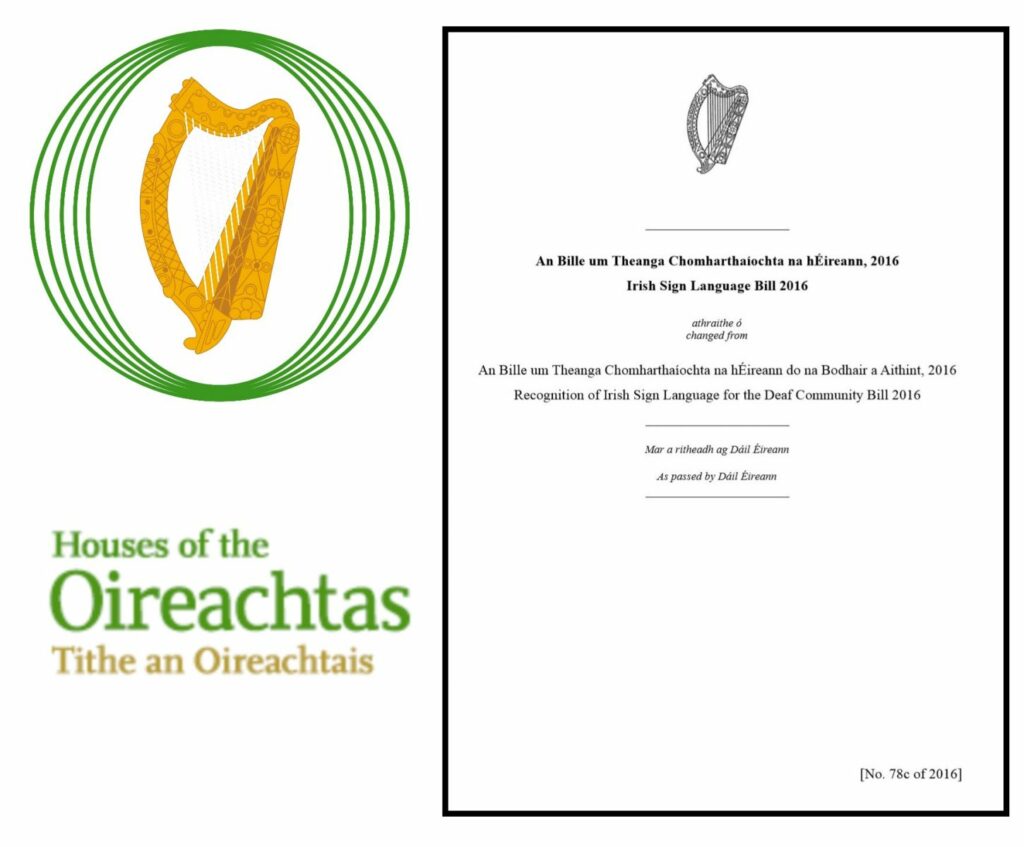
Front page of the Irish Sign Language Act 2017, which aims to create better access to education and interpreting, among other services that would improve the lives of deaf people across the Republic of Ireland. However, the main goal of the Act was to recognise ISL as an official language.
Source: O’Herlihy Access Consultancy
Government Recognition in the North – Pledges and Charters
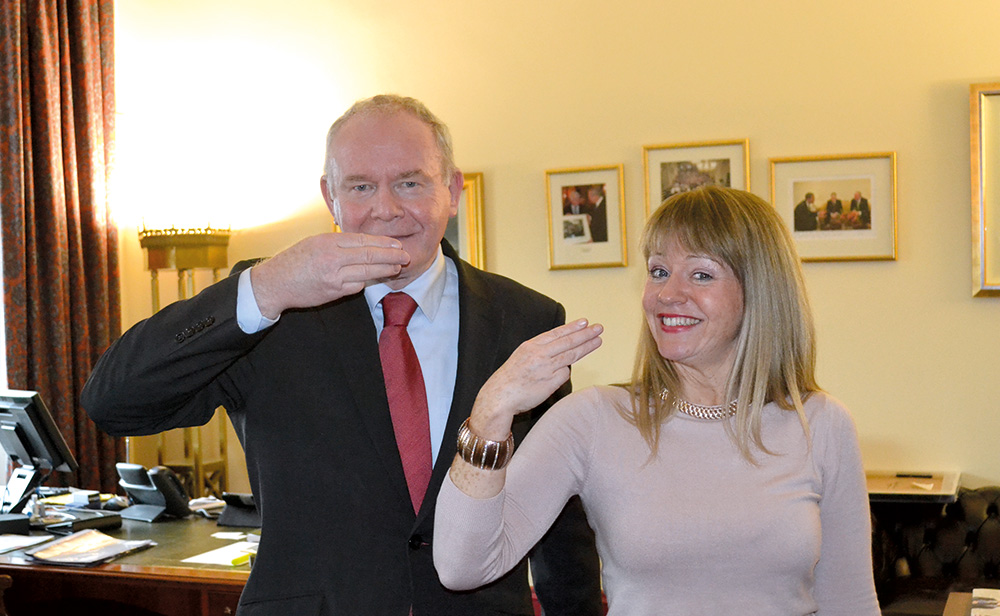
Image of Northern Ireland’s Deputy First Minister Martin McGuinness (left) standing beside the British Deaf Association Northern Ireland Community Development Manager Majella McAteer (right), as they sign BSL/ISL pledge together in 2016.
This made for an optimistic turn for the deaf community of Northern Ireland. Although this pledge came 200 years after that first school opened in the Republic of Ireland, it was a step forward.
Source: British Deaf News

A photo of the British Deaf Association’s Director of Community Development Damian Barry(left), standing with Minister of Culture, Arts and Leisure Carál Ní Chuilín (middle), and the Chair of the British Deaf Association Dr. Terry Riley. The Minister holds the BSL/ISL pledge.
Source: British Deaf News

An image of interpreters discussing voting for the Northern Irish government.
In 2017, Northern Irish Parliament processes grinded to a halt as parties refused to come together because of disagreements over the Irish Language Act (for verbal and written Irish, not ISL), which was meant to give the Irish language equal status to English in Northern Ireland. This stand-off lasted for 3 years, further pushing back not only the Irish Language Act, but also talks of recognising ISL and BSL as official languages – just as recognition was in sight for Northern Irish deaf communities, it was pulled away again.
Source: The Irish News

An image of the Mayor of Belfast (middle) and council members signing the charter.
In March 2019, Belfast City Council signed up to the British/Irish Sign Language Charter, becoming the first council in Northern Ireland to do so. By doing this, they promised to provide better public services for deaf communities.
Source: NIDeaf.com

An image of Stormont, the Northern Irish Parliament building, sitting empty.
In January of 2020, the Northern Irish political parties finally came back together. However, this was just in time for the COVID-19 Pandemic to hit the UK, meaning that all other matters have since been pushed aside to deal with it. This begs the question – when will they continue their discussions on ISL and BSL? When will deaf people in Northern Ireland get the recognition they deserve?
Source: Irish Independent
(Source of header image: Image by Darkmoon_Art from Pixabay)
Student ID: 209027574